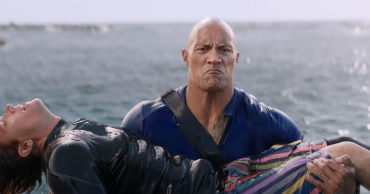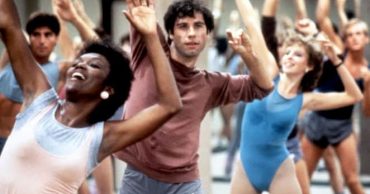Pulp Fiction, Quentin Tarantino‘s second film, has long been celebrated as his most iconic work, fundamentally shaping the landscape of modern cinema. Released in 1994, the film established a signature style characterized by its non-linear storytelling, interwoven narratives, and razor-sharp dialogue that has influenced countless filmmakers and captivated audiences alike. 30 years later, the characters from Pulp Fiction remain legendary figures in popular culture, each imbued with a distinctive charm and depth that continues to resonate with fans.
Many of these characters are intricately connected to Tarantino’s broader cinematic universe, creating a rich tapestry that links his various films together. This interconnectedness not only enhances the viewing experience but also solidifies Tarantino’s status as a master storyteller whose creations endure in the collective imagination of movie lovers around the world. So, let’s explore these iconic characters and their backstories and unveil some easter eggs along the way.
Vincent Vega’s Trip to Amsterdam Explored
While Pulp Fiction is very much an ensemble piece, Vincent Vega (John Travolta) and Jules Winfield (Samuel L. Jackson) are the central characters who tie into every story in the film. As two medium-level gangsters who work for mob-boss Marsellus Wallace (Ving Rhames), the two are vastly different in personality but similar in their abilities to be ruthless at the flick of a switch. Yet, underneath their brutality lies a love for conversation.
At the beginning of the movie, we learn that Vincent has just got back from Amsterdam. To that, he shares his experiences with Jules – expressing his love for legal marijuana and being able to buy a cold beer at the movies. This backstory was directly inspired by Quentin Tarantino’s own travels to the vibrant city. After the success of his first movie Reservoir Dogs, Tarantino decided to write his next movie in Amsterdam. He spent 5 months living in a one-bedroom apartment while he took in the culture of the city, which ultimately found its way into the script for Pulp Fiction.
Michael Madsen’s Connection to Pulp Fiction
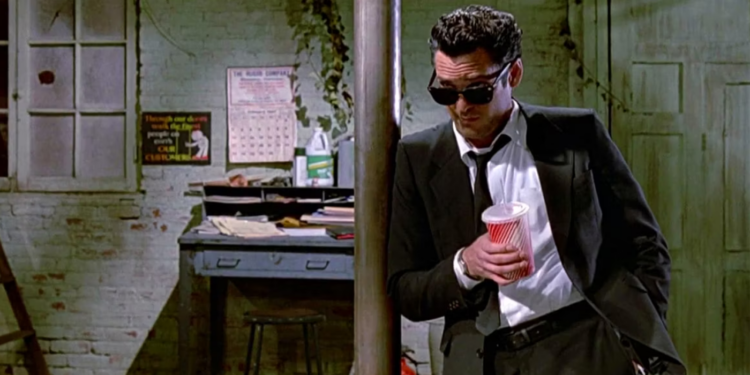
Michael Madsen starred in Reservoir Dogs as the psychotic criminal dubbed Mr. Blonde. However, we learn his real name is Vic Vega. So, when Pulp Fiction introduced Vincent Vega, movie fans and critics put two and two together and hypothesised that they were brothers. Tarantino confirmed this and stated he even planned on making a movie about the pair, which would have been titled “Double V Vega”. While the film never came to fruition, it does give us some insight into the timeline of the two crime classics. Seeing as Vincent dies in Pulp Fiction and so does Vic in Reservoir Dogs, the movie would have taken place in the events before Pulp Fiction. So technically, this means that Pulp Fiction is set in a timeline where Vic is still alive.
Bruce Willis’ Character Did Something Pivotal You Weren’t Aware Of
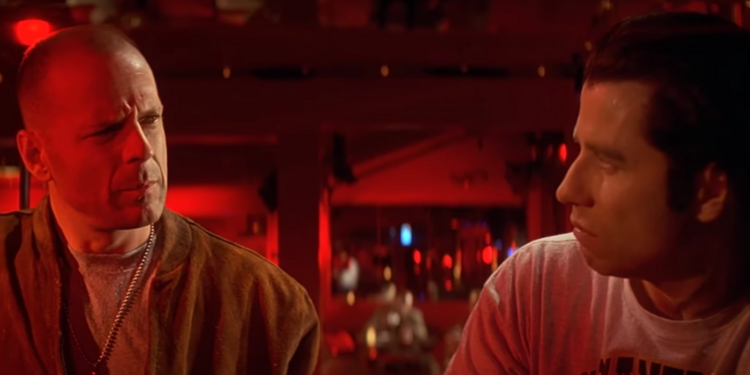
Bruce Willis‘ boxer character Butch and Vincent Vega only cross paths for two short scenes in Pulp Fiction. However, they are both pivotal moments to the story. What’s more, a key event happens off screen that many may have missed. When the two first meet, Butch approaches the bar after a meeting with Marsellus in which he agrees to take a fall in his fight for a large sum of money. As Vincent sits and has a drink, he takes an instant dislike to Butch and stares him down. As the feisty man that he is, Butch says “you looking at something friend?” to which Vincent responds saying “You ain’t my friend” before calling him “punchy”. The stare down continues until Butch leaves.
This scene is unofficially linked to another scene in the film where Vincent complains to his drug dealer that somebody keyed his car. When speaking on the Opie and Anthony radio show, Tarantino confirmed that Butch was the one who keyed the car following his unsavoury conclave with Vincent. While Vincent doesn’t suspect Butch, it’s possible that as time goes by he gets an inkling, seeing as he is the one waiting for Butch in his apartment after he backs out on his deal to throw the fight.
A Deep Dive Into Butch’s Gold Watch
The “Gold Watch” segment in Pulp Fiction stands out as a pivotal moment within the film’s intricate web of intertwining stories, with the watch itself serving as a quintessential MacGuffin that propels the narrative forward. This vital plot device is introduced through a memorable flashback featuring a young Butch, who learns about the watch from his father’s war buddy Captain Koons, played by Christopher Walken. Walken’s character delivers a powerful monologue, recounting the harrowing journey his father endured during the war to ensure the watch was preserved, thus imbuing it with deep personal significance. This heartfelt backstory not only adds emotional layers to Butch’s character but also connects the audience to the larger themes of legacy and sacrifice.
After failing to throw the fight, Butch and his girlfriend Fabienne flee their apartment and Butch entrusts her with the keepsake of the gold watch. However, when she forgets to grab it, Butch must go back to retrieve it. If you look at the scene carefully, Tarantino mirrors a shot from the legendary war movie Full Metal Jacket. The tracking shot follows Butch as he moves like a soldier when approaching his apartment complex, simulating a war scene as Butch enters his own war much like his father did.
The Story of the Unlucky Extra
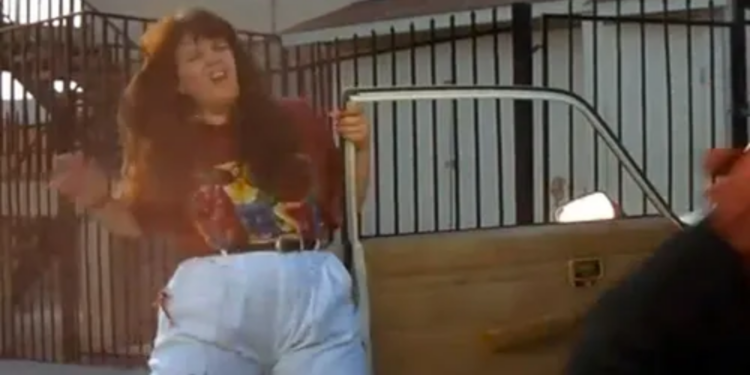
Tarantino is known to interconnect his movies through his characters, often giving them the same last names. However, his biggest overflow went largely unnoticed. In Reservoir Dogs, a woman is pulled from her car during a shootout after a botched robbery. This woman was played by Linda Kaye, who also featured in Pulp Fiction. However, this time her luck got worse and she is accidentally shot by Marsellus during another gun fight on the streets of Los Angeles. So, if Kaye is playing the same woman – she is beyond unlucky. Want to read more about Pulp Fiction? Here’s how another well-known movie copied Tarantino’s style and actually succeeded.
 Follow Us
Follow Us
